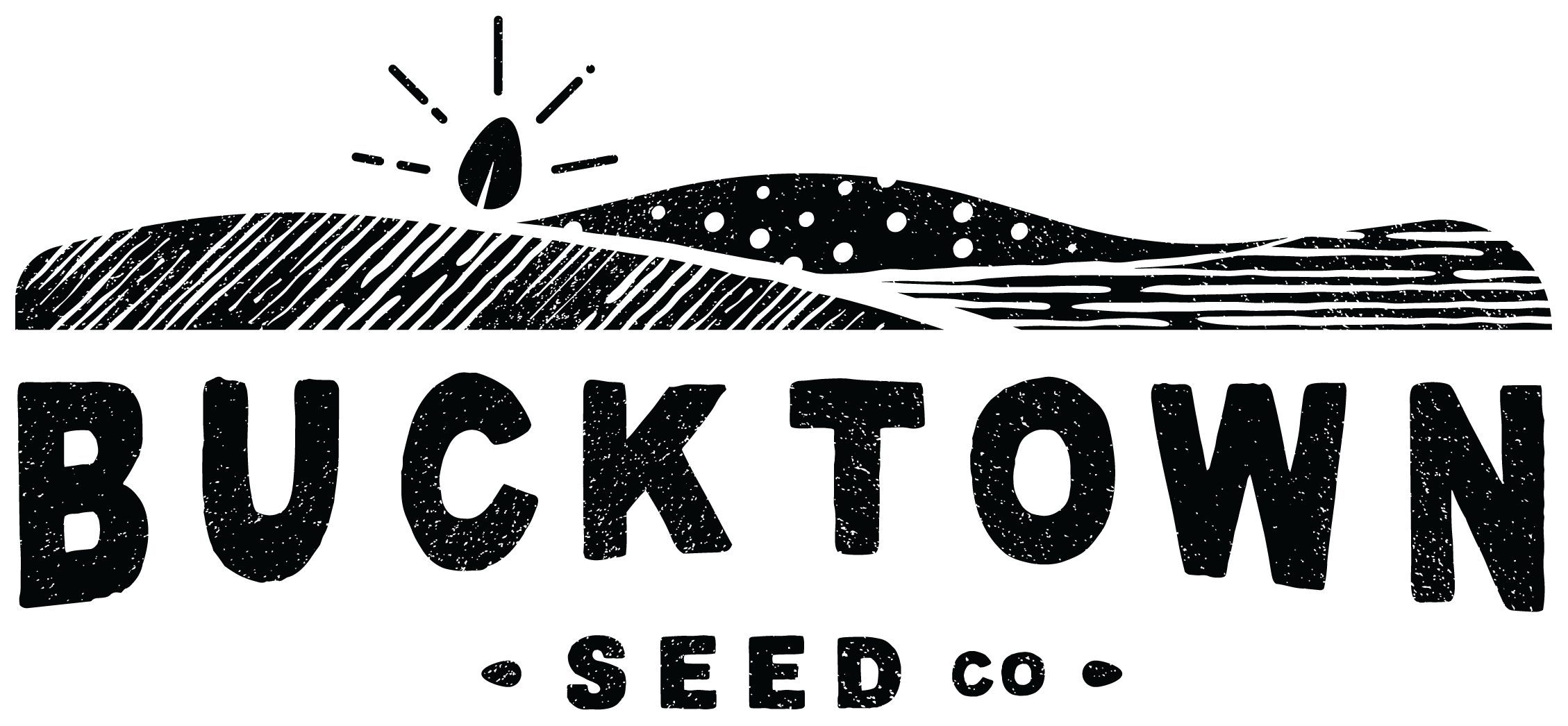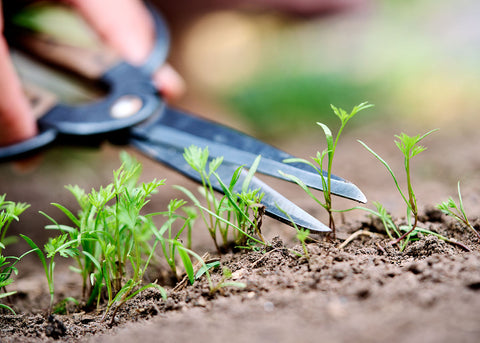Are you looking to start a backyard garden, harvest nutritious food and foster greater self-sufficiency? Look no further! This blog post provides a simple guide on starting your garden from seed, along with valuable tips for successful indoor planting. Explore our extensive collection of heirloom and organic open-pollinated seeds to discover the ideal match for your home garden.

Cultivating your own seedlings offers a broader range of seed varieties compared to purchasing plants from your nearby garden center. Additionally, it presents a significant cost-saving opportunity.
Some of the seed species that require a longer growing season and need a head start include: tomatoes, peppers, broccoli, eggplant, cauliflower, onions, melons, and winter squash. Of course, your growing zone will determine what is best to start indoors. For example, residents in Texas enjoy an extended growing season compared to those in Maine, enabling them to directly sow certain varieties that colder climates might not support. If you're uncertain about your growing zone and the average frost dates for the first and last times, be sure to check to out the hardiness zone map here.

Planting Seeds in Containers : Best Practices
A loose moist soil mixture that is disease free and specifically made for starting plants. Choose a sterilized, soilless, or pasteurized growing medium rather than using outdoor garden soil or standard potting soil, as seedlings can be vulnerable to soil-borne diseases.
Use seed-starting containers with good drainage. There are many different choices of seed starting supplies. 72 cell & 50 cell plug flats, CowPots, Leakproof Seedling Trays, Seed Starting Kits, Seedling Heat Mats, Grow Light Systems, soil blocks and more. The good news is that all work well to starting healthy seedlings.
A complete low-analysis fertilizer. The seed starting mixture will likely contain fertilizer or compost, which will give your seedlings a great start for the first few weeks. A low-analysis fertilizer is defined as a fertilizer that contains a low percentage of nutrients, usually 30% or less. After your seedlings grow their first true leaves, use a diluted fish emulsion liquid fertilizer weekly at half strength. Avoid fertilizing before seedling emergence to prevent salts from hindering water absorption by the seeds.
The best germination temperature. Some seeds can germinate in colder conditions, while others prefer much warmer soil for rapid and successful germination. Utilizing a cost-effective heat mat is a simple way to maintain a consistently warm soil environment, especially for seeds that require extra assistance in sprouting.Nearly every seed can experience improved germination success with the use of a heat mat, but it's particularly advisable for peppers, tomatoes, eggplant, and similar seed species. Keep in mind that the temperature for newly germinated seedlings is typically lower than what is needed for initial germination.
Watering. Ensure the seeds stay consistently moist but not overly saturated. Use a gentle hand mister or bottom-watering. Fill your leak-proof tray with 1/4-1/2" of water, and let it be absorbed through the container's bottom hole to maintain consistent moisture.
Creating a mini greenhouse. Use a seed starting kit or build your own setup with our seed starting trays, plug flats, humidity domes, heat mats and seedling lighting systems. This compact greenhouse serves a dual purpose: it elevates and sustains temperatures while ensuring steady moisture levels. Remove the cover shortly after the seedlings grow their true leaves.
Light. Ensuring proper lighting for seedlings post-germination is vital to prevent weak and leggy plants, promoting the growth of robust seedlings with sturdy stems. Strive for a daily light exposure of 12 to 18 hours.For optimal results, utilize a grow light setup featuring a high-output fixture and a 6400K full-spectrum bulb.
Bumping up your seedlings. For crops that have outgrown their initial pots and require a few additional weeks indoors, transition to larger growing containers. The plants' stems, leaves, and roots experience rapid growth, and providing more space helps prevent root constriction, resulting in thicker and sturdier stems. Seedlings exhibit two types of leaves: cotyledons (the initial seed leaves) and true leaves (developing above the cotyledons). When transplanting, avoid handling the seedling by the stem; instead, cradle the root ball in your hand and stabilize by holding a leaf.

Let's get down to the step by step process
1. Mix your seed-starting soil with warm water in an empty container and completely fill your cells with soil.
2. Press gently but firmly in each container to ensure that soil is filled to the bottom.
3. Sow 2-4 seeds in each cell and cover lightly with soil.
4. Mist the soil with a hand sprayer. If you're bottom-watering, fill the bottom of your watertight tray with about 1/2" of water. Make sure to never let the mix dry out.
5. Label the different varieties with Wooden Pot Labels.
6. For optimal outcomes, utilize a heat mat and place the humidity dome over your leakproof tray.
7. Once seedlings have germinated they will do best with 12-18 hours of light. Remove your dome and use a grow light setup.
8. Fertilize once a week at 1/2 strength with an organic fertilizer.
9. Transfer seedlings to larger containers that require additional space.9. Move your plants outdoors when the conditions align. Review the specifications for each variety; typically, this transition occurs 1-3 weeks after the average last frost date.






Your tips on starting a veggie garden was easy to follow and very informative
Thank you for the tips! I have always had plants but this is my first attempted ‘garden’.